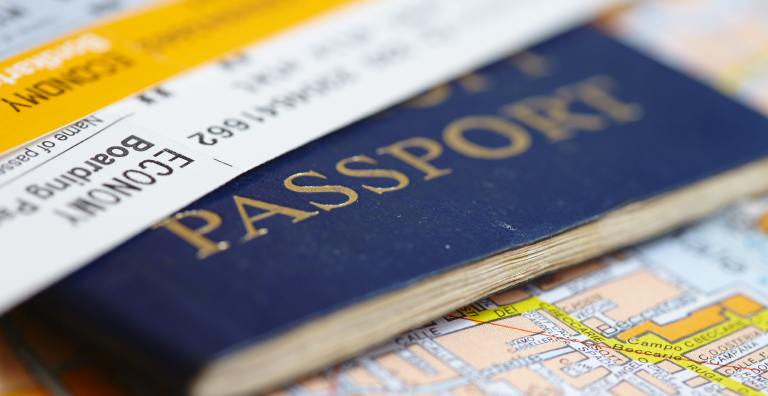The Anatomy of Passport
Fear not gentle reader, this is not going to be a gruesome and gory dissection of a well-loved document at the end of its ten-year, well-traveled life but more of a deep dive into what makes a passport a passport. Every year, tens of millions of passports are issued and, much like the majority of the technology which surrounds us in our everyday lives, the general public has little comprehension of the complexity which belies such a common object. Let us peel back the layers and take a look inside.
Taking a Pulse
Let’s start with the microcontroller — this is the brain of the passport, or perhaps it’s the beating heart — either way, this is the essence of what makes an e-passport an e-passport. It stores the biometric data to allow the document to be verified — immutable once locked, unclonable and capable of processing logic and cryptography.The antenna embedded alongside the microcontroller within an inlay acts as the lungs, the oxygen for the document being the radiofrequency energy which powers the microcontroller enabling it to communicate with the outside world giving it a voice. But what about a passport which is mute, one which has lost its electronic voice? Is it genuine and suffering from a damaged microcontroller or antenna, or is it a suspect document — a creation of a criminal enterprise, devoid of its heart and lungs? In this event, it’s time for the document examiner to start their analysis and perform an autopsy to determine real from fake.
Diagnosis: Genuine. Prognosis: Keep One Step Ahead!
If we continue our analogies, the data page must be the face. This part of the document is where recognition, validation and verification occur. It is adorned with jewels — with transparent windows, holograms, color changing inks and complex pattern work ― which protect it from counterfeiting and fraudulent alteration. The data page is the component we use to add personal details onto the document. Depending on the specification, we often use a laser engraving process to permanently mark the multiple layers which build up the polycarbonate structure that houses the many security features on which the document is constructed. It is impossible to change this information without causing scars to our analogous corporeal form. These scars are the tell-tale signs that our document has endured some attacks and help the document examiners identify genuine from suspect. Once attacked, there is no opportunity for triage, no chance to repair and make it as good as new — the document has served its purpose and has made the ultimate sacrifice by securing the data for which it was destined and designed to protect.
What about the body, the limbs? Surely the pages which make up the bulk of the booklet are the appendages — the arms, the legs — these are what provide the movement, the mobility. Afterall the sole purpose of the visa pages is to be stamped and marked with the history of where it has been and for how long. Perhaps the watermarks in the paper are the feet, as they ground the document and provide the stability for many other features to be built using our successful multilayer approach.
Soul Searching
Does a passport have a soul? Do the security designs on these pages allow us to represent the soul of the country ― to show its history, its culture, its flora and fauna and its natural beauty through printed pictures and patterns using secure visible and invisible inks? We can travel to destinations in our own country, be reminded of our achievements and understand our past present and future by merely flicking through the pages of our passports whilst on our way to new destinations.
We clothe our passports in formal attire, in cover material made from paper or fabric and decorated with emblems to represent a country. This is far from haute couture, but passports are styled in a way which imbues national pride and provides the initial and immediate recognition of the holder’s nationality. See also our previous blog about how security components enhance the security of a passport.
Familial Traits
Like us, our passports have families — they don’t exist in isolation. Their brothers and sisters are the Specials Service Diplomatic books. They share the same DNA and components as the ordinary passports, although it seems unfair that they are called “ordinary” as they are from it. They should really be called extraordinary for all the technology, creativity and innovation which goes into making these documents. Their forebearers are those documents which have been superseded by generational change ― their grandparents were passports filled in by hand, their parents were non-electronic machine-readable passports.
Much like humans — at a component level at least ― all passports are essentially the same, created to a basic blueprint published in ICAO 9303. They are but a collective assortment of paper, plastic and ink; yet similar to guiding and nurturing our own children through the maze of life, we carefully design and create our passports to ensure they meet the requirements of a secure travel document.
So, like each one of us, each passport is unique and one of a kind when personalized with data and given life through issuance.
Now, that you have read about the anatomy of a passport, learn about the benefits of an e-Passport in our white paper.
Matt Sugdon, PhD, is the Director of Security Graphics at HID Global and leads the creative team producing security designs for passports, ID cards and other government issued credentials. Matt has worked in the security printing industry for over 20 years in a variety of technical and new product development roles.
